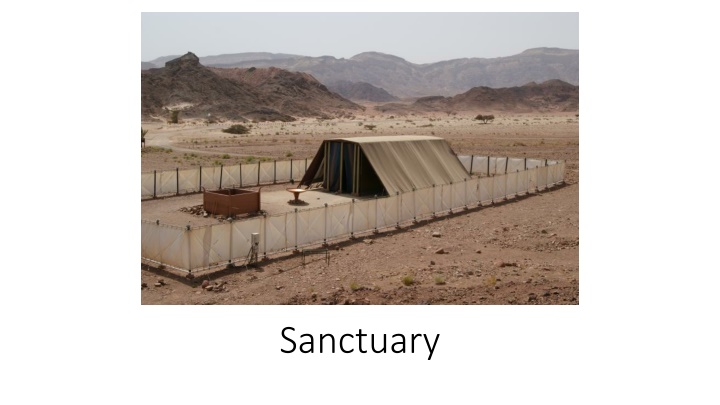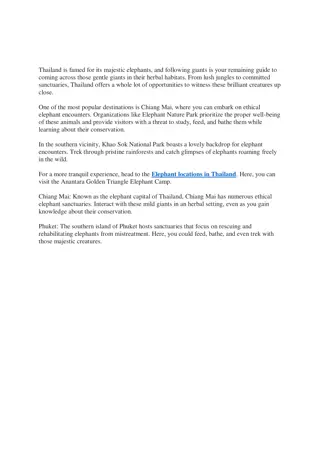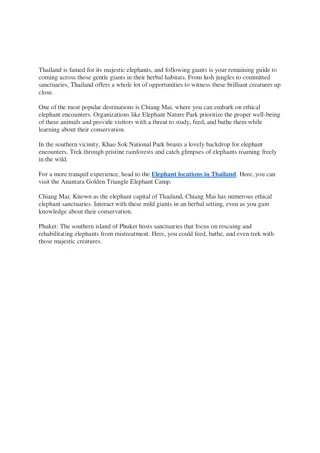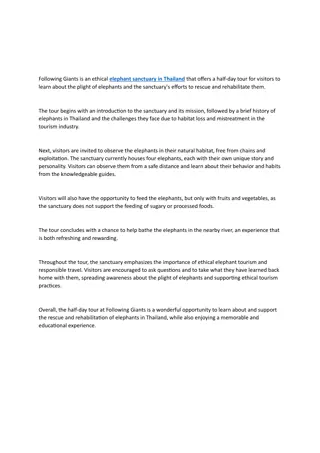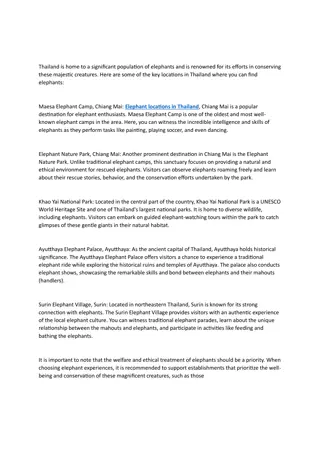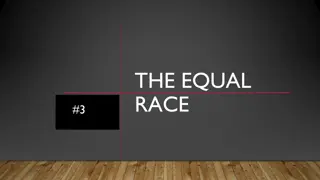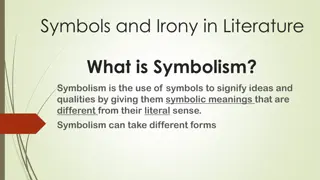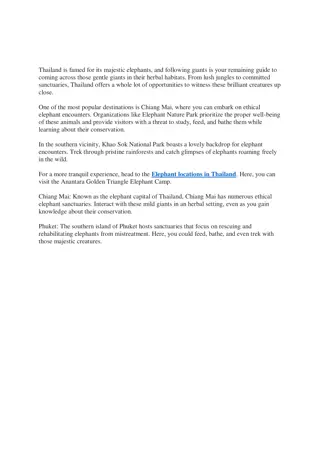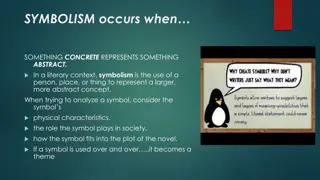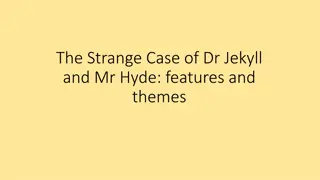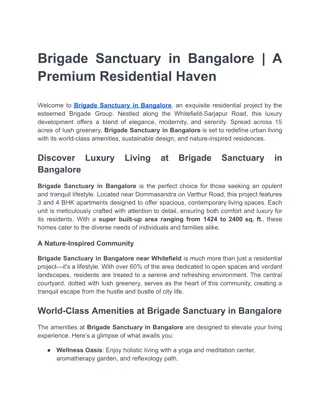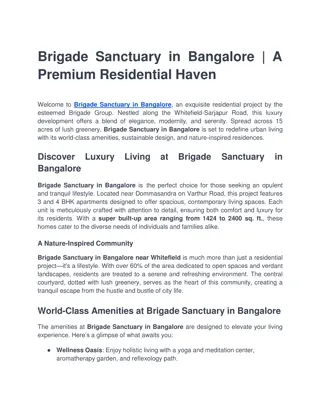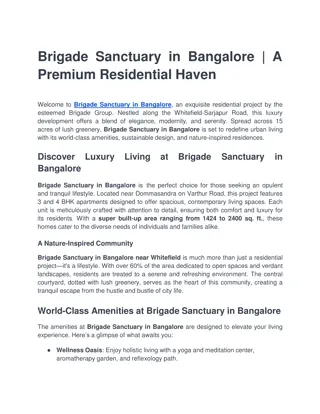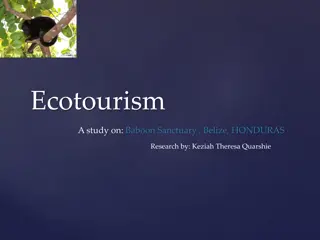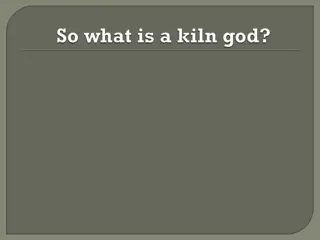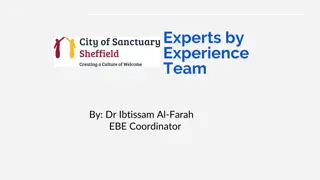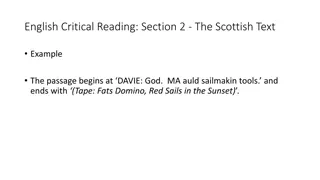Exploring the Sanctuary: Parts, Coverings, and Symbolism
Discover the three main parts of the sanctuary and its courtyard, the contents within each part, the significance of the coverings, and the symbolic representations of colors used in the sanctuary and priest's clothing. Dive into verses discussing forgiveness, reconsecration of the sanctuary, and God's dwelling among His people.
Download Presentation

Please find below an Image/Link to download the presentation.
The content on the website is provided AS IS for your information and personal use only. It may not be sold, licensed, or shared on other websites without obtaining consent from the author.If you encounter any issues during the download, it is possible that the publisher has removed the file from their server.
You are allowed to download the files provided on this website for personal or commercial use, subject to the condition that they are used lawfully. All files are the property of their respective owners.
The content on the website is provided AS IS for your information and personal use only. It may not be sold, licensed, or shared on other websites without obtaining consent from the author.
E N D
Presentation Transcript
Name the three main parts of the sanctuary and the courtyard. The Outer Courts The Holy Place The Most Holy Place
What was in each part of the Sanctuary? The Court: The Altar of Sacrifice The Laver Holy Place: Table of Shewbread Seven-branched Lampstand Altar of Incense Most Holy Place: Ark of Covenant Mercy Seat Cherubim
Describe the Coverings of the Sanctuary Exodus 26 4 Layers Exodus 26:1 Finely twisted Linen Exodus 26:7 Curtain made of goat's hair, bleached white Exodus 26:14 Ram skins dyed red Durable Leather
What does each covering represent? Inner Layer of Finely Twisted Linen Inner layer of finely twisted linen represents Jesus. The Red in the cloth represents Christ's life. The Blue in the cloth represents His obedience. The Purple in the cloth represents royalty, and the Gold in the cloth represents purity. White Woven Goat s Hair The White Woven Goat s Hair represents Jesus's perfection and purity. The ram's skin dyed red The ram's skin dyed red represents the blood of Jesus. The durable leather The durable leather represents Jesus covering His divinity with humanity
The following colors were used in the sanctuary and in the priests clothing. What does each color represent? Red, Hebrews 9:11,12 Christ s blood Blue, Numbers 15: 38,39 Obedience Purple, Mark 15: 16-18 Royalty White, Revelation 19:8 Righteousness Black, 1 John 1:5 Sin Gold, Job 22:25 Divinity in Heaven Silver the Hebrew word for yearn (k sap) shares a root with the Hebrew word for silver (kesap) Longing Desire Brass, Philippians 2:5-8 Divinity on Earth - Fully God, and Fully Man - Amalgamated)
Discuss the following verses: 1 John 1:9 If we confess our sins, he is faithful and just and will forgive us our sins and purify us from all unrighteousness. Daniel 8:14 He said to me, It will take 2,300 evenings and mornings; then the sanctuary will be reconsecrated. Exodus 25:8 Then have them make a sanctuary for me, and I will dwell among them.
The priests were from which of the 12 tribes? Why? Exodus 32:25-29 Moses saw that the people were running wild and that Aaron had let them get out of control and so become a laughingstock to their enemies. So he stood at the entrance to the camp and said, Whoever is for the LORD, come to me. And all the Levites rallied to him. Then he said to them, This is what the LORD, the God of Israel, says: Each man strap a sword to his side. Go back and forth through the camp from one end to the other, each killing his brother and friend and neighbor. The Levites did as Moses commanded, and that day about three thousand of the people died. Then Moses said, You have been set apart to the LORD today, for you were against your own sons and brothers, and he has blessed you this day.
Describe the Robe of the Common and High Priest Common Priest The priests wore linen breeches as an undergarment. The garments were woven of one piece, spotless, and without any blemish. All the common priests wore a plain, white linen robe and turban. They always removed their sandals before entering the Sanctuary.
Describe the Robe of the Common and High Priest The High Priest The high priest wore linen breeches as an undergarment. The garments were woven of one piece, spotless, without any blemish. Over the undergarment, he wore an embroidered linen coat, again woven of one piece of fabric. The coat was tied with an embroidered girdle. Over this the High Priest wore a one-piece sleeveless solid blue robe. On the hem of the blue robe hung tinkling little golden bells and bright pomegranates. The ephod, was worn outside the blue robe - a shorter garment of gold, blue, purple and scarlet, and fine twined linen. The ephod was fastened at the shoulders with two onyx stones, on each were engraved the names of six of the tribes of Israel. On the ephod the High Priest wore a breastplate made of two pieces of fabric fastened together. In the breastplate, next to the heart of the High Priest, were two onyx stones called the Urim and the Thummim, through which God made known His will. On the outside of the breastplate were 12 precious stones. They were arranged as four rows of three. Their sequence, from left to right and from top to bottom were: sardis (brownish red), topaz (yellow to yellowish red), carbuncle (red), emerald (clear green), sapphire (deep blue), diamond (sparkling clear), jacinth (bright yellow), agate (delicate blue), amethyst (violet), beryl (green-yellow), onyx (bright yellow), jasper (red, brown, or yellow). He wore a mitre (a crown) on his head. Fastened to the forefront of it with a ribbon of blue, was a plate of pure gold on which was engraved the inscription 'HOLINESS TO THE LORD'
The Great Controversy; Chapter 28 "... The subject of the sanctuary and the investigative judgment should be clearly understood by the people of God. All need a knowledge for themselves of the position and work of their great High Priest. Otherwise it will be impossible for them to exercise the faith which is essential at this time or to occupy the position which God designs them to fill. Every individuals has a soul to save or to lose. Each has a case pending at the bar of God. Each must meet the great Judge face to face. How important, then that every mind contemplate often the solemn scene when the judgment shall sit and the books shall be opened, when, with Daniel, every individual must stand in his lot, at the end of days. (488.2) All who have received the light upon these subjects are to bear testimony of the great truths which God has committed to them. The sanctuary in heaven is the very center of Christ's work in behalf of men. It concerns every soul living upon the earth. It opens to view the plan of redemption, bringing us down to the very close of time and revealing the triumphant issue of the contest between righteousness and sin. It is of the utmost importance that all should thoroughly investigate these subjects and be able to give an answer to everyone that asketh them a reason of the hope that is in them." (488.3)
Hebrews 4:14-16 (NIV) 14Therefore, since we have a great high priest who has gone through the heavens, Jesus the Son of God, let us hold firmly to the faith we profess. 15For we do not have a high priest who is unable to sympathize with our weaknesses, but we have one who has been tempted in every way, just as we are yet was without sin. 16Let us then approach the throne of grace with confidence, so that we may receive mercy and find grace to help us in our time of need."
What kinds of animals were brought daily to the courtyard? John 1:29 A young bull, rams, heifers, lambs, goats, and pigeons or doves were brought to the sanctuary daily. All were ceremonially clean, without spot or blemish
How do you see Christ represented in the sanctuary and its services?
